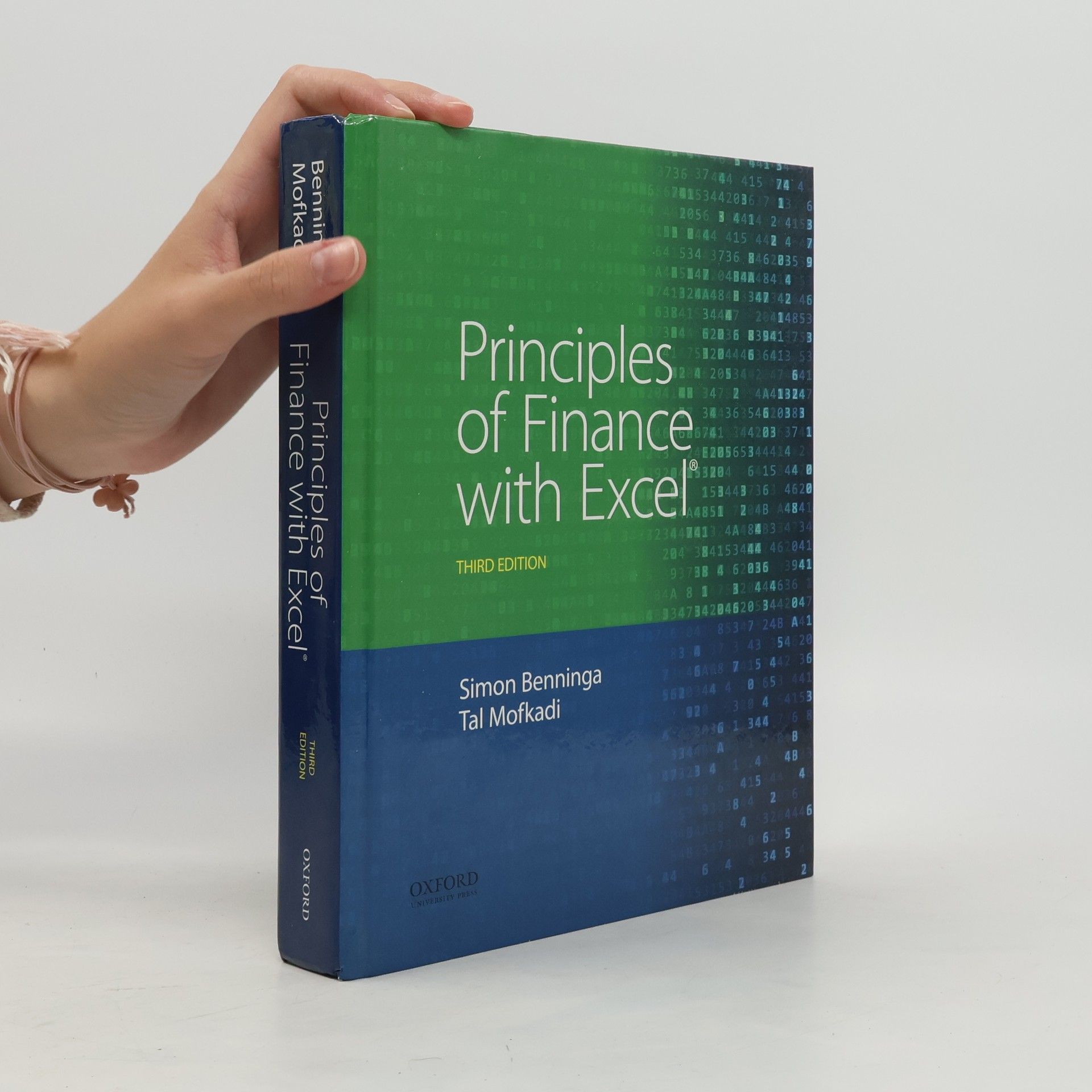Offering exceptional resources for students and instructors, Principles of Finance with Excel, Third Edition, combines classroom-tested pedagogy with the powerful functions of Excel software. Authors Simon Benninga and Tal Mofkadi show students how spreadsheets provide new and deeper insights into financial decision making. The third edition of Principles of Finance with Excel covers the same topics as standard financial textbooks--including portfolios, capital asset pricing models, stock and bond valuation, capital structure and dividend policy, and option pricing. For each topic, the authors provide step-by-step instruction on how to use Excel functions to help with relevant decision-making. A separate section of PFE (Chapters 21-26) reviews all Excel functions used in the book, including graphs, function data tables, dates, Goal Seek, and Solver. Visit www.oup.com/us/benninga for student and instructor resources, including all the spreadsheets used as examples in the text and in the end-of-chapter problems.
Šimon Benninga Livres




Too often, finance courses stop short of making a connection between textbook finance and the problems of real-world business. Financial Modeling bridges this gap between theory and practice by providing a nuts-and-bolts guide to solving common financial models with spreadsheets. Simon Benninga takes the reader step by step through each model, showing how it can be solved using Microsoft Excel®. In this sense, this is a finance "cookbook," providing recipes with lists of ingredients and instructions.Areas covered include computation of corporate finance problems, standard portfolio problems, option pricing and applications, and duration and immunization. The second edition contains six new chapters covering financial calculations, cost of capital, value at risk (VaR), real options, early exercise boundaries, and term structure modeling. A new technical chapter contains a potpourri of tips for using Excel®.Although the reader should know enough about Excel™ to set up a simple spreadsheet, the author explains advanced Excel® techniques used in the book. The book includes chapters dealing with random number generation, data tables, matrix manipulation, and VBA programming. It also comes with a CD-ROM containing Excel® worksheets and solutions to end-of-chapter exercises.
Corporate Finance: A Valuation Approach
- 472pages
- 17 heures de lecture
Financial valuation tools - Using financial reporting information - Valuation : processes and principles - Building pro-forma financial statements - Analyzing the firm's environment - Analyzing the firm's operations - J.M. Smucker-projecting financial performance - Capital structure and the cost of capital - Estimating discount rates - Valuation by multiples - Valuing the firm's debt - The valuation of convertible securities - Valuing equity cash flows directly - Final remarks.